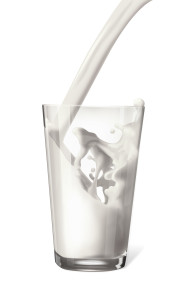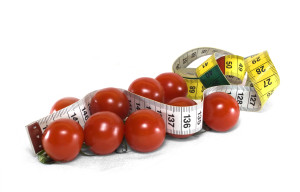Healthy Eating; Easier said than done, for some…
When it comes to weight loss, there is no need to over think it. It all boils down to a basic equation. To lose weight you simply need to take in less calories than you expend.
So in knowing that, it comes down to making healthy choices.
How Do I know If I’m Eating the Right Foods?
With supermarkets providing an endless supply of “healthy” and “convenient” choices, consumers just don’t know how to truly make the right decisions when it comes to buying the ‘right’ food. Clever advertising takes us all for a ride.
My own personal rule of thumb for healthy living is to eat whole and natural foods. Foods that are as close to the way God created them for us to have on earth! Foods that have not been tampered with by man, for example packaged foods, with more than 10 different ingredients should be avoided.
 Take milk for instance. Full fat milk has a minimal amount of man-made alterations, compared to skim, semi-skim, 1%, UHT, evaporated etc. If, when grocery shopping, you walk only around the outside of the store, you will be getting products that are as close to their natural state as possible. These are fresh fruit and vegetable produce, meats and dairy; which are the basis of a healthy diet. All the packaged items in the middle aisles are where the calories (and other chemicals, sugars and preservatives) reside.
Take milk for instance. Full fat milk has a minimal amount of man-made alterations, compared to skim, semi-skim, 1%, UHT, evaporated etc. If, when grocery shopping, you walk only around the outside of the store, you will be getting products that are as close to their natural state as possible. These are fresh fruit and vegetable produce, meats and dairy; which are the basis of a healthy diet. All the packaged items in the middle aisles are where the calories (and other chemicals, sugars and preservatives) reside.
Beware of the “Fat Free” Slogan
Even foods with man-made alterations that sound like they should be beneficial to your waistline, like low fat or diet products, are in most cases far from the truth. When the fat has been removed from a product, the taste is also removed. So in order to make it taste good enough to sell, other substances are added. Substances such as sugars and preservatives. These do more harm than good.
Be Aware Of Your Portion Sizes
So before you go running off, eating full fat products and wondering why the weight is still not dropping like you would hope, it again comes down to calories in versus calories out. Sometimes all that needs to be done to create that deficit between energy burnt and what is consumed, is to reduce your portion sizes.
I highly recommend for those who just don’t know where those extra calories are coming from, to write it all down! A great experiment is to write down everything that goes into your mouth for a whole week. Everything including portion sizes, drinks and even the time of day you are consuming foods/beverages. Sometimes foods sneak in without us even realising.
By doing this you can see the source of the majority of foods you eat; is it mainly carbohydrates? Or mainly protein and vegetables?
OK. So How Do I Know The Right Portion Size For Me?
Below are some guidelines on how to select your portion size for your main food groups and when to eat them.
Protein:
When eating protein, all your body requires is a palm size portion (and this is before the protein is cooked). Your protein sources are best if they aren’t fried, battered, or crumbed. Grilling or pan frying them in minimal oil or no oil is best.
Carbohydrates:
Carbs are those wonderful foods that look and taste amazing. This portion should only be the size of your ‘fist’ – not anyone else’s fist size, yours. Beware of refined and processed carbs, as they cause blood sugar levels to spike. This forces your body to store this excess sugar as fat. Aim to eat carbohydrates with as much fibre and the lowest GI possible.
Also it is best to ONLY consume carbohydrates after an intense work
out. The workout needs to actually be intense – not just a leisurely stroll down the street. If carbs are consumed after a workout, the glucose absorbed into the blood stream will be fed back into your muscles where is it required, instead of your fat stores. So you are best to earn your carbohydrates by completing a workout first.
Fats:
Fats have been given a bad rap. The truth is that good fats will not make you fat!
All you need, however is a ‘thumb’ sized portion – again, YOUR thumb size. Some examples of good fats include:
Avocado, Raw nuts/seeds, Olive oil, Omega3 oil, Coconut oil, and Salmon.
Cheese and dairy can be classified as a fat, when it comes to the thumb size portion.
Free foods:
Your free foods, are foods you are able to have an unlimited amount of. These include all salad vegetables, broccoli, cauliflower, Brussels sprouts, artichokes, zucchini, capsicums, leafy green vegetables etc.
Important Points To Remember To Making Healthy Lifestyle Changes:
· First cut down your packaged food items (all those convenient foods that last in the pantry for weeks) by shopping around the outside of the supermarket.
· Buy only whole, natural, single ingredient items
· Write down everything you eat for at least a week. Exactly how much you eat, what time, and what the majority of foods being consumed are, and then see how you can go about making some changes.
· Cut down your portion sizes to:
o Your PALM size portion of protein
o Your FIST size portion of carbohydrates (after exercise)
o Your THUMB size portion of good fats
· Lastly it’s very important to remember; when eating meals eat protein and fats together (in their correct portion sizes) and then eat protein and carbohydrates together (again in their correct portion sizes – after exercise). Then include as much free foods with each meals as you desire to add fibre and satiety.
Good luck!
Originally posted 2014-02-20 01:27:55.



